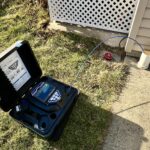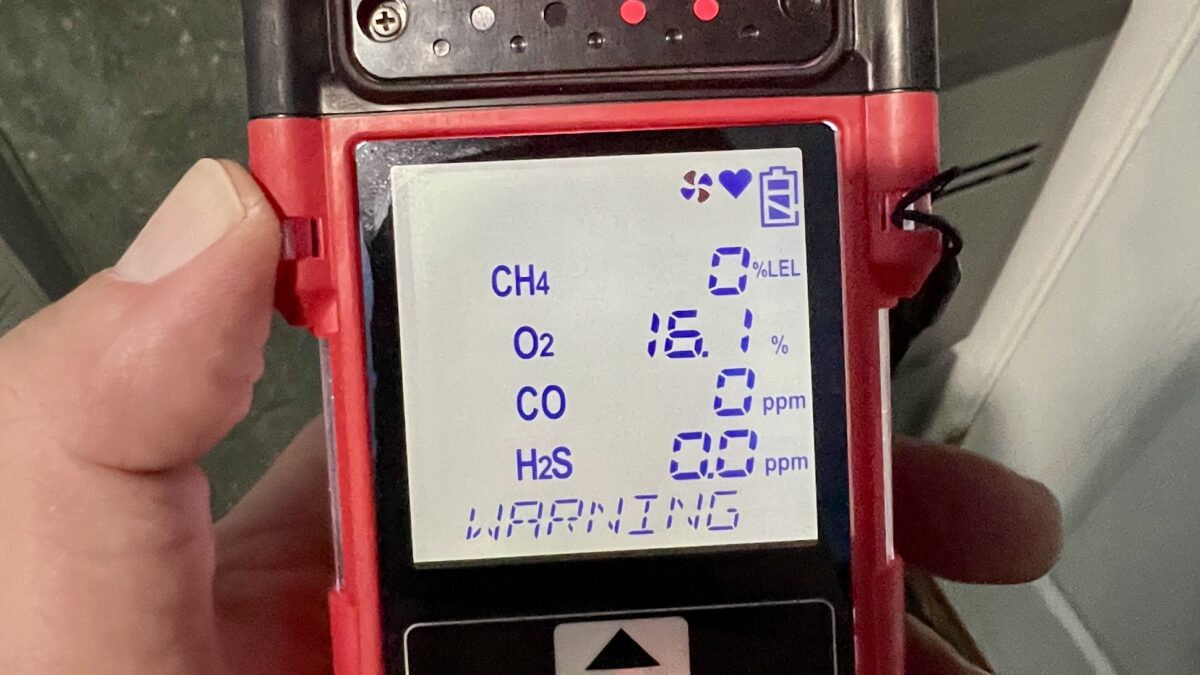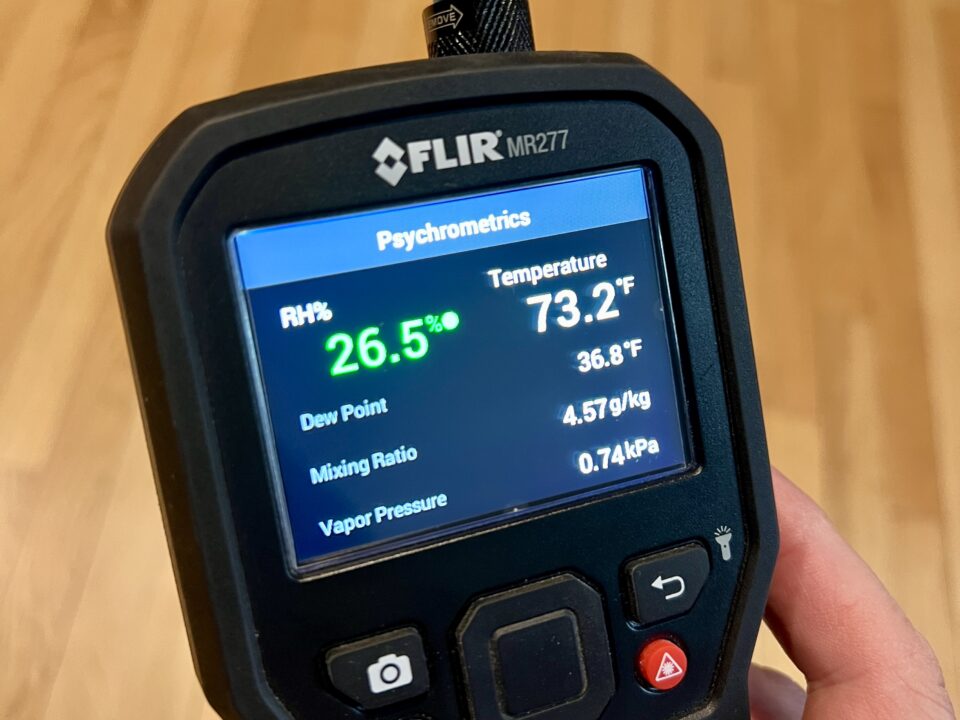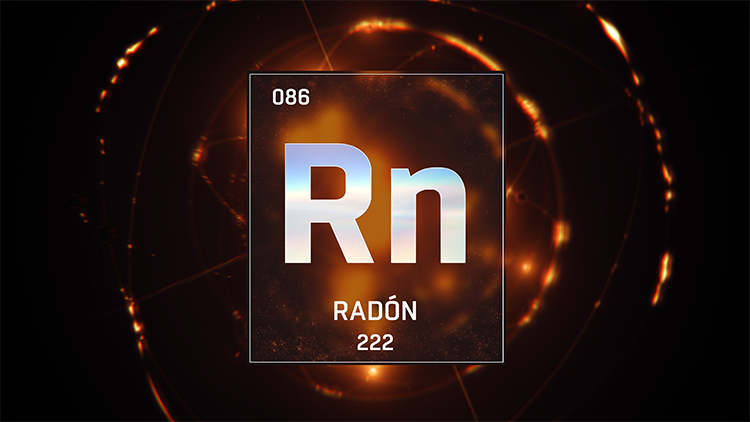
A Common Staten Island Issue That Can Lead to Costly Repairs
February 27, 2025High-Efficiency Furnaces & Combustion Air:
Modern high-efficiency furnaces are designed to use fuel more efficiently, but they also require a greater volume of combustion air compared to older models. Insufficient air supply can lead to performance issues, oxygen depletion, and even safety hazards in tightly sealed homes.
During a recent home inspection, I evaluated a newer, more energy-efficient furnace located in a small mechanical room. To access the unit, I had to close the door, unknowingly restricting airflow into the space. As the furnace continued running, I noticed an unusual sensation—almost as if I wasn’t getting enough air. Further testing revealed that oxygen levels were dropping, with a recorded reading of 16.1%. Given that normal atmospheric oxygen levels are around 20.9%, this indicated a significant reduction in available oxygen.
Prolonged exposure to oxygen levels below 19.5% is considered an oxygen-deficient environment, which can lead to dizziness, confusion, and other health concerns. At around 16% oxygen, cognitive impairment can occur, and breathing may become noticeably more difficult, especially in enclosed spaces. If oxygen levels continue to drop further, the risk of unconsciousness increases.
This situation underscored a critical issue: the previous, less efficient furnace had functioned with the existing air supply, but the newer model required more intake air, making the original venting system insufficient. Without proper adjustments, combustion appliances may struggle to operate safely and efficiently, increasing risks for homeowners. This highlights the importance of proper ventilation modifications when upgrading to a high-efficiency furnace.
Why Do High-Efficiency Furnaces Require More Air?
Newer furnaces have advanced burner designs that require more air to operate efficiently. At the same time, modern homes are built to be more airtight, limiting the availability of natural air infiltration for combustion. When installed in an enclosed space, a furnace may struggle to pull in enough air, creating negative pressure and affecting performance.
Many high-efficiency furnaces require a dedicated outdoor intake to ensure a continuous air supply. Without it, they can end up depleting indoor oxygen levels, especially in small mechanical rooms or homes with restricted airflow.
Signs Your Furnace May Be Starving for Air
If your furnace isn't receiving enough combustion air, you may notice:
-
A stuffy or tight feeling in the furnace room when the unit is running.
-
Flickering pilot lights or burners struggling to stay lit.
-
Fatigue, headaches, or dizziness while the furnace is in use.
-
Excess condensation on windows, which can indicate poor ventilation.
-
The furnace running inefficiently or shutting down due to air supply issues.
How to Ensure Proper Airflow for Your Furnace
To prevent combustion air issues, homeowners should take the following steps:
-
Verify the Presence of an Outdoor Air Intake – Many high-efficiency furnaces are designed to draw combustion air from outside. If your system lacks a dedicated intake, it may be relying on indoor air, which can lead to oxygen depletion in confined spaces.
-
Check Mechanical Room Ventilation – Furnaces installed in enclosed spaces need adequate air supply. This can be achieved with properly sized wall louvers, ceiling vents, or door grilles to allow continuous air exchange.
-
Inspect Combustion Air Vents – Ensure that all vents are unobstructed and appropriately sized for the furnace's requirements. Older vents may not provide enough airflow for newer, more efficient models.
-
Assess Door Louvers or Venting – If the furnace is located behind a door, confirm that there are louvers or passive vents to facilitate airflow. Sealing off a furnace room without ventilation can create combustion issues.
-
Consult an HVAC Professional – If you are uncertain whether your furnace has adequate airflow, a licensed HVAC technician can evaluate your system and recommend modifications.
-
Consider Mechanical Ventilation – In airtight homes, an energy recovery ventilator (ERV) or heat recovery ventilator (HRV) can help maintain a balanced air exchange, reducing the risk of negative pressure around combustion appliances.
Final Thoughts
High-efficiency furnaces offer significant energy savings, but they require proper combustion air supply to function safely and effectively. When replacing an older furnace, homeowners must ensure that air intake requirements are met, either through dedicated outdoor air supplies, properly vented mechanical rooms, or supplemental ventilation solutions.
Not sure if your home's furnace is properly vented? A home inspection can help identify air quality concerns before they become a safety risk.




